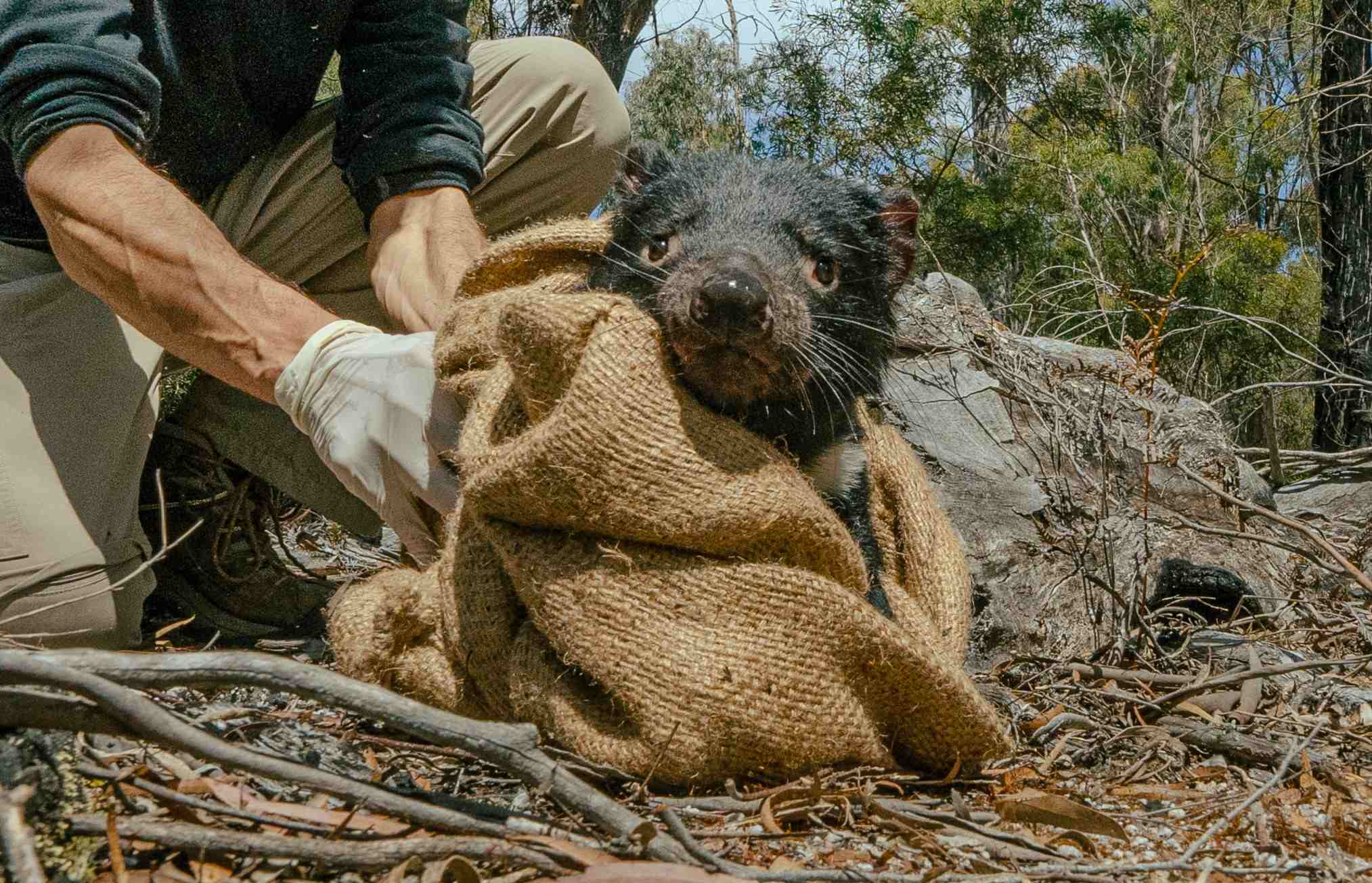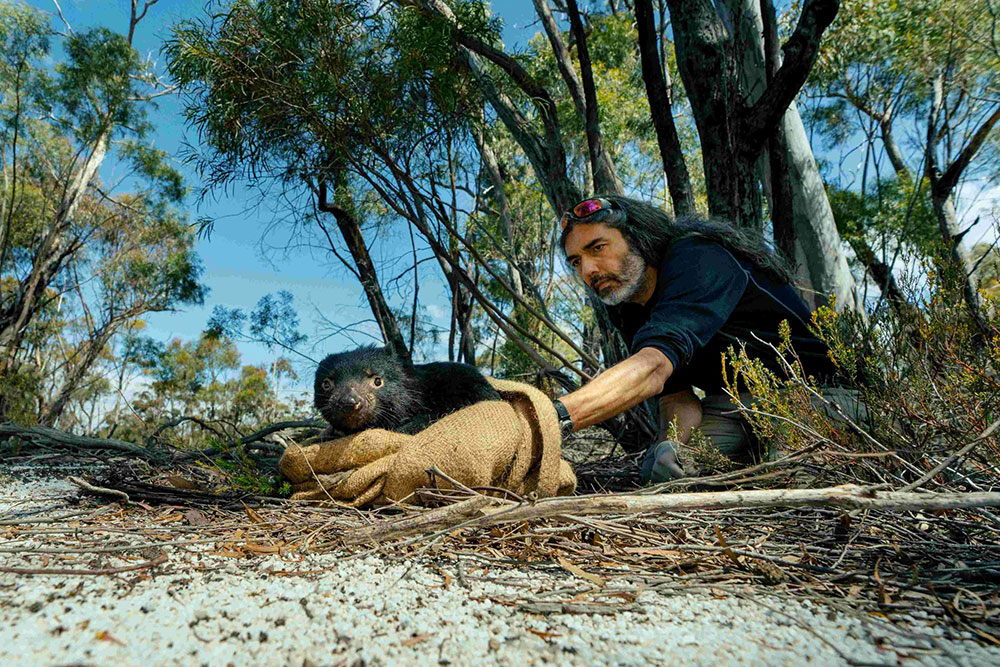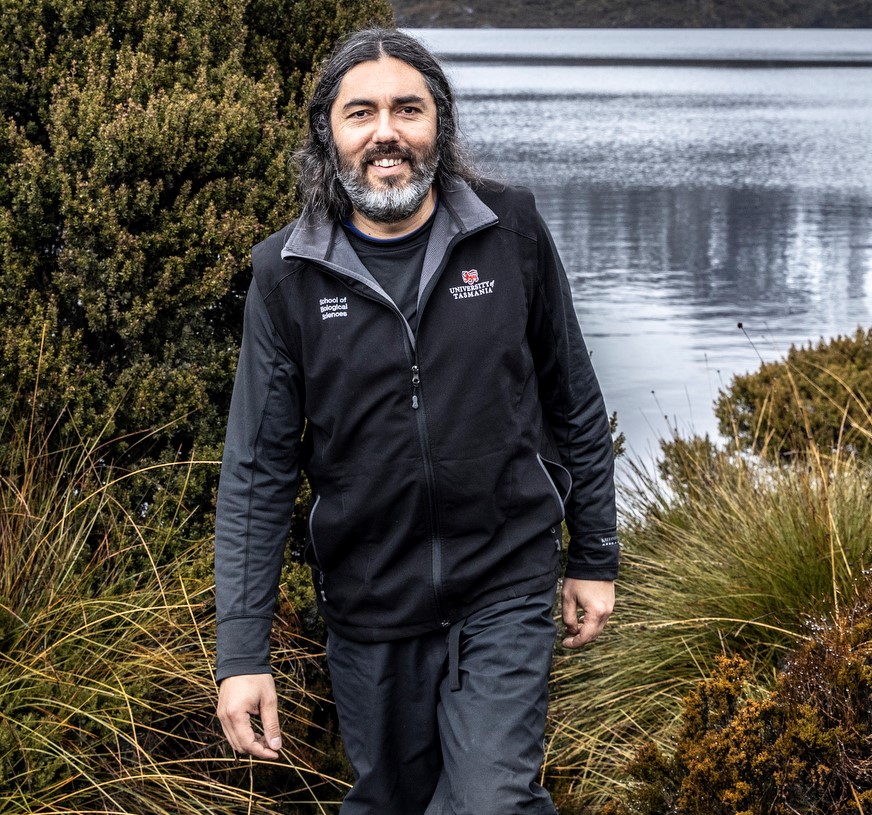This is Brandy, a handsome Tasmanian devil aptly named by Tamar Valley vineyard owner Tim High during a research trip in November 2022.
Tim and his wife, Sheena, support two scholarships for graduate students working in priority study areas for the Tasmanian devil. It means they get to experience vital research first-hand.
Tim joined University of Tasmania researcher Dr Rodrigo Hamede and PhD student Tengyi Mai on the November field trip at Freycinet. Three Tasmanian devils were caught and released that day as part of the research – two girls and Brandy, a male.

The High Family Scholarships in Tasmanian Devil Research address key objectives including: vaccines and immunotherapy for devil facial tumour diseases, identifying and mitigating human threats to devil populations, identifying factors that limit the intermixing of devils across Tasmania, determining the distribution and impact of Devil Facial Tumour Disease 2 (DFT2), and assessing the benefits of releasing healthy devils into the wild.
Tim studied zoology and worked as a dairy scientist in the UK, while Sheena holds degrees in biology and viticulture. The couple fell in love with and moved to Tasmania after Tim visited for work. They became interested in Tasmanian devils
after seeing the population decline on their vineyard in the Tamar Valley.
“We moved (to Tasmania) in the 90s and used to see devils on the farm, but it has been many years since we’ve seen a devil our way,” Tim said.
“They are such an iconic part of Tasmania. Everyone knows of Tasmanian devils, but the cartoon version, and I felt if we could do something towards their protection, we should.”
Tim says he and Sheena had been following the Save the Tasmanian Devil Program for several years and decided they would like to make a donation to support two PhD researchers to do important research over and above what existing grants allowed.
We wanted to stretch the current research … we’re absolutely delighted that we now have two students working on developing edible baits to deliver devil facial tumour disease vaccines and computer modelling to improve future management.
“We’re very happy with how the students have integrated into existing programs and how they have extended the existing research that is so critical to understanding and hopefully finding a way forward with dealing with the disease.”
Sheena agrees and says that while it is unrealistic to think an absolute cure for the facial tumour diseases will be found, she is encouraged by results to date.
“The devils themselves seem to be extraordinarily resilient in building partial immunity and have even brought forward the time they can fall pregnant,” she said.
“The females breed earlier which means that even though the devils might catch the disease at two years of age, they may have already had one or two litters by that stage, keeping their population going.
“They are also likely building up their own immunity, so if we can add on top of that some vaccine immunity, that would be a great outcome.”
Dr Rodrigo Hamede, who has been studying Tasmanian devils for eighteen years, having done both his honours and PhD at the University of Tasmania, says the research is unique worldwide and will help guide conservation strategies.

“This is one of the best studies of emerging infectious diseases in the world,” he said.
“It’s a very important study system to understand how mechanisms against cancer emerge and evolve in nature.
“We’ve witnessed the evolutionary processes of Tasmanian devils with facial tumours systematically, and now we have the opportunity to consolidate a lot of that information – a huge data set.
“So this new project will consolidate years and years of research and try to build epidemiological models to predict transmission dynamics and population impacts in the future.
“And that’s going to help, of course, in developing the conservation strategies we need now.”
The second scholarship recipient who commenced in 2022 was Sally Ann Nofs, who is being supervised by lead vaccine researcher Dr Andrew Flies.
Tim says that he and Sheena have hosted many visitors from the UK who all fell in love with Tasmania.
“If we can contribute to shining a light on the brilliance of Tasmania and what it offers, including its flora and fauna, then that is a good thing,” he said.
“As long as we keep growing the devil population then the greater the chance of the devils being able to survive this.”
Story image: Brandy the Tasmanian devil and devil release with Dr Rodrigo Hamede
Main image: Tengyi Mai (PhD student) with Dr Rodrigo Hamede and Tim High
Read more stories from Impact 2022.



